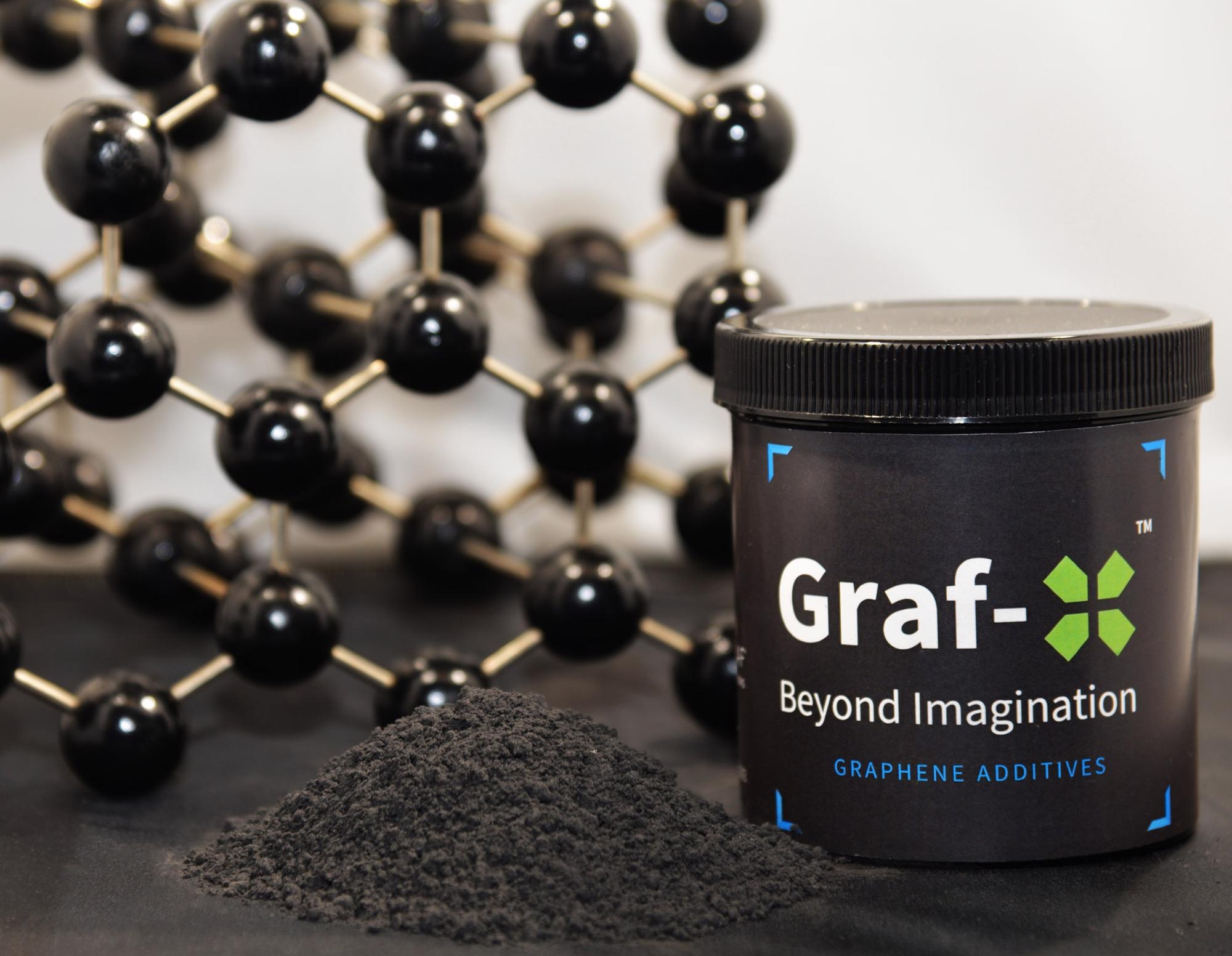NeoGraf Solutions, a leading developer and manufacturer of high-performance natural and synthetic graphite sheet and powder products, has extended its range of next-generation graphite materials with the launch of Graf-X™ graphene nanoplatelets (GNP) and graphene precursors (GP). Both high-performance additive materials deliver enhanced strength, performance, and reliability in a broad range of thermoset and thermoplastic applications.
 Introducing NeoGraf’s new Graf-X™ graphene nanoplatelet (GNP) additives and graphene precursors (GP). Image Credit: NeoGraf Solutions
Introducing NeoGraf’s new Graf-X™ graphene nanoplatelet (GNP) additives and graphene precursors (GP). Image Credit: NeoGraf Solutions
GNPs are ultra-thin, multilayer graphene nanoplatelets. Graphene is a single layer of carbon atoms arranged in a hexagonal matrix that is high strength, super thin, and offers the highest electrical and thermal conductivity. GPs are graphite products designed specifically as a raw material for efficient high-volume production of graphene products through further processing.
The launch of the Graf-X line is a transformational move for NeoGraf Solutions which has more than 140 years of product leadership and innovation in the carbon and graphite industry. “We’re leveraging our growing production capabilities and application development expertise to take graphene from the lab to large-scale commercial success,” said Jon Taylor, NeoGraf Product Manager. NeoGraf is a fully integrated graphene product supplier with a GNP capacity of more than 750 metric tons and a GP capacity of approximately 1300 metric tons at their facility in Lakewood, Ohio.
NeoGraf Solutions' expanded product portfolio provides the industry with a source of high-volume, quality graphene nanoplatelets with sizing and specification options that can be tailored for specific applications. The company also leverages its extensive sourcing and processing capabilities to supply graphene precursors, which are graphite products designed to enable efficient conversion into graphene materials.
Graf-X GNP and GP products are additive materials that enhance mechanical strength, electrical conductivity, and thermal properties of thermosets and thermoplastics such as polypropylene (PP), polyamide (PA), polystyrene (EPS and XPS), polyethylene (HDPE, LDPE, LLDPE), polyvinylchloride (PVC), and polyethylene terephthalate (PET).
The new graphene materials can increase the toughness of plastics by up to 2.5 times without a significant weight increase while a loading as small as 0.5 wt% can increase tensile strength by 15% or more. A graphene loading of 15% can double thermal conductivity and push the electrical conductivity of plastics into the anti-static and static-dissipative ranges.
In composites formulations, loadings of <5 wt% of graphene can increase strength by 40%, improve stiffness by 20%, and elevate impact strength by 80%. Graphene can also improve the heat resistance of composites and provide noise reduction of up to 20%.
The advanced graphene materials are commercially available and can be used in a range of plastic applications including electrically conductive fillers for electrostatic discharge (ESD) plastics in automotive and aerospace electronics and heat resistance additives for under-hood plastic components such as HVAC systems, water pump housings, and valve covers.